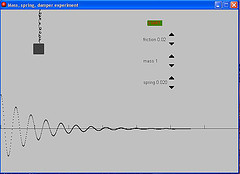We have understandings of the physical world at the human scale which we have developed from infancy and which generally serve us well. But our understandings at the macro level (astrophysics) and the micro level (atomic physics) are modelled on understandings of human level phenomena.
These human level understandings let us down, for example, it can be useful to visualise electrons as golf balls in circular orbits but in fact they are better described as being probability clouds, similarly tunnelling behaviour of atomic particles and Heisenberg's Uncertainty Principle break one of the earliest rules we learnt as toddlers, Piaget's object permanence. Object permanence is the principle that an object placed in a container will continue to exist even if out of sight. In the world of atomic physics, objects can tunnel out of containers and there are limits to their observability, both of which break our fundamental human level understandings.
Electricity is a subatomic phenomenon which can be understood by analogy with water, it is convenient to use pressure for an analogue for voltage and flow rate as an analogue for current. This is a useful analogy but it does lead to misunderstandings.

"... mother lived the latter years of her life in the horrible suspicionthat electricity was dripping invisibly all over the house."
- James Thurber
http://standby.lbl.gov/pictures/AllOvertheHouse.gif
Caillot (1993) blames taking hydraulic analogies too far “Teaching strategies have also been pointed as an origin for the development of alternative conceptions. An example is the use of hydraulic analogies. “
The scientific view is that electric current is the circulation of electrons in a loop.
There are a number of common misconceptions about electricity which are incompatible with this view, many of which are related to taking the water analogy too far. Deakin University (2008) lists the following:
o the current from each end of the battery clashes in the globe to provide the light (clashing- currents model)
o some of the current from one end of the battery is lost as it passes through the globe (consumption model)
o current from one end of the battery is all used up in the globe, making the second wire unnecessary (source-sink model).
Similar alternate conceptions which are compatible with a circulating current are noted in Hubber (2005):
The Electric Power Companies supply electrons for your household current.
“Electricity” is used up in electric circuits.
Charge is used up in electric circuits.
More devices in a series circuit means more current because devices “draw” current.
Batteries store, and supply, electrons or “electricity” to the electric circuit.
A wire from a battery to a bulb is all that is needed for the bulb to light up.
Most, if not all, of the alternative conceptions listed above can be categorised into
Ang (1993) confirms similar alternative conceptions, “battery is a store of electricity... one fifth of the pupils appear to hold the "clashing current" model of electric flow while about one-tenth of the sample appear to hold the "single wire" model of current flow.”
Crowley (2002) notes that in her research, a number of students, though in agreement with the scientific view, had reverted to their alternative conception by the exam.
References
Ang Kok Cheng, (1993) Primary Pupils' Conceptions About Some Aspects Of Electricity, AARE Conference 1993, retrieved 9/4/08, http://www.aare.edu.au/98pap/ang98205.htm
Caillot (1993), Learning Electricity and Electronics with Advanced Educational Technology, North Atlantic Treaty Organization Scientific Affairs, retrieved 9/4/08, http://books.google.com.au/books?id=0QuqBbRIWewC&pg=RA5-PA261&lpg=RA5-PA261&dq=alternate+conceptions+electricity&source=web&ots=BWmNoL4eJl&sig=Eb7c41LB-ISpATsVHFLG0t6I2FM&hl=en#PPP1,M1
Crowley, J.K. , (2002) Analogies Constructed by Students in a selective High School, Curtin University of Technology, retrieved 9/4/08, http://adt.curtin.edu.au/theses/available/adt-WCU20030923.135720/unrestricted/06chapter5.pdf
Deakin University (2008) School of Education Resources - Science and Environmental Education, retrieved 9/4/08 http://www.deakin.edu.au/arts-ed/education/sci-enviro-ed/early_years/electricity.php
Hubber (2005) POEs, Post Boxes, and IAIs, Science Teacher Association of Victoria, Physics Teachers’ Annual Conference, Monash University, Victoria February 8, 2005, retrieved 9/4/08 http://www.vicphysics.org/documents/events/stav2005/A2POESPH.doc




